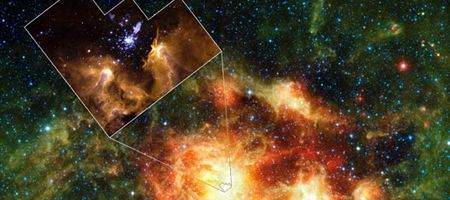NASA has released the first pictures from its Wide-field Infrared Survey Explorer, WISE.
Since beginning its infrared scan of the entire sky last month, the space telescope has beamed back more than a quarter of a million images – a ‘candy store’ of pictures, says NASA.

“WISE has worked superbly,” said Ed Weiler, associate administrator of NASA’s Science Mission Directorate.
“These first images are proving the spacecraft’s secondary mission of helping to track asteroids, comets and other stellar objects will be just as critically important as its primary mission of surveying the entire sky in infrared.”
One image shows a comet called Siding Spring with a tail stretching about 10 million miles. WISE is expected to find dozens more during its mission.
Another image shows a star-forming region called NGC 3603, about 20,000 light-years away in the Carina spiral arm of our galaxy.

The third picture shows the Andromeda spiral galaxy, about 2.5 million light-years away.
“All these pictures tell a story about our dusty origins and destiny,” said Peter Eisenhardt, the WISE project scientist at NASA’s Jet Propulsion Laboratory.
“WISE sees dusty comets and rocky asteroids tracing the formation and evolution of our solar system. We can map thousands of forming and dying solar systems across our entire galaxy. We can see patterns of star formation across other galaxies, and waves of star-bursting galaxies in clusters millions of light years away.”

Other WISE mission targets include comets, asteroids and the cool stars called brown dwarfs. WISE discovered its first near-Earth asteroid and first comets last month.






